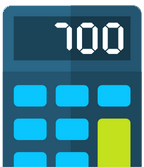What is the 2021/2022 personal allowance for Scotland?
The Scottish Parliament has been setting their own levels of income tax since the 2017-18 tax year. It’s not an extra tax, but the income tax that’s paid by Scottish taxpayers. It doesn’t apply to income from dividends or savings, that’s taxed at the same rate as the rest of the UK.
It’s not an extra tax, added on to other income tax rates. But a separate set of income tax rates than run parallel to other UK countries. HMRC are still the department that collect and administer Scottish income tax. They pass on money collected from Scottish taxpayers to the Scottish government, so they can fulfil their budget responsibilities.
Does that mean all the tax reliefs and allowances are different too?
All of HMRC’s tax reliefs and allowances still apply to Scottish taxpayers. The Personal Allowance amount is the same through all four UK countries.
Your entitlement to tax reliefs and allowances doesn’t change, but there may be slight alterations to the rules where the income tax rate is a factor. For example, Scottish taxpayers are only eligible for the Marriage Allowance if you’re on the Starter, Basic and Intermediate rates of income tax. Not if you’re paying the Higher or Top rate of Scottish income tax. Also, if you’re’ paying the 21% Intermediate Rate of Scottish income tax, you still only get tax reduced by 20% under the Marriage Allowance.
What are the Scottish rates of income tax?
For the 2021-22 tax year, you have a Personal Allowance of £12,570. This means that you don’t pay any tax on income to this amount.
2021-22 Scottish income tax rates:
| Your income | Band | Scottish rate of income tax payable |
| £12,570- £14,667 | Starter Rate | 19% |
| £14,668 – £25,296 | Basic Rate | 20% |
| £25,297 to £43,662 | Intermediate Rate | 21% |
| £43,663 to £150,000 | Higher Rate | 41% |
| £150,000+ | Top Rate | 46% |
Who pays Scottish income tax?
Obviously if you live in Scotland, you pay Scottish income tax rates. But there are different scenarios that make the distinction a bit less clear. For example:
- You have a home in Scotland and one somewhere else in the UK: in this case, you’ll be considered a Scottish taxpayer if your Scottish home is your ‘main home’.
- You don’t call anywhere your main home: if you spend more days in Scotland than anywhere else, then you’ll pay Scottish rates of income tax.
- You move to or from Scotland during a tax year: wherever you’ve spent most of the year determines which income tax you pay. For example, if you spend a larger proportion of the year in Scotland, then you pay Scottish rates even if you end the tax year in another part of the UK.
Things that definitely don’t make you a Scottish taxpayer:
- Travelling to and from Scotland for work
- Being born in Scotland and living elsewhere
- Considering yourself to be Scottish, as your nationality and heritage
Will I pay Scottish income tax and UK rates of income tax on different income streams?
If you have income from dividends or savings, then you’ll pay tax on that at UK income tax rates. And this may be alongside your Scottish income tax payments on your salary. You only see the split on your annual tax summary, not on your P60, P45 or payslip.
How does HMRC record my Scottish taxpayer status?
If you pay tax through the self assessment process, HMRC will work out your tax calculation based on your Scottish taxpayer status based on your address. There isn’t anywhere on a self assessment tax return for you to indicate that you’re a Scottish income taxpayer.
As a PAYE taxpayer, HMRC records and communicates your taxpayer status through your tax code. For example, the most common tax code for the 2021-22 tax year is S1257L, which means:
- S: Scottish income tax rates apply
- 1257: Personal Allowance rate is £12,570
- L: You’re entitled to the full rate of Personal Allowance
Other variations of your tax code will also contain the letter ‘S’ to indicate that you’re a Scottish income taxpayer.
Income Tax Calculator
Estimate how much tax you should pay on your income...







